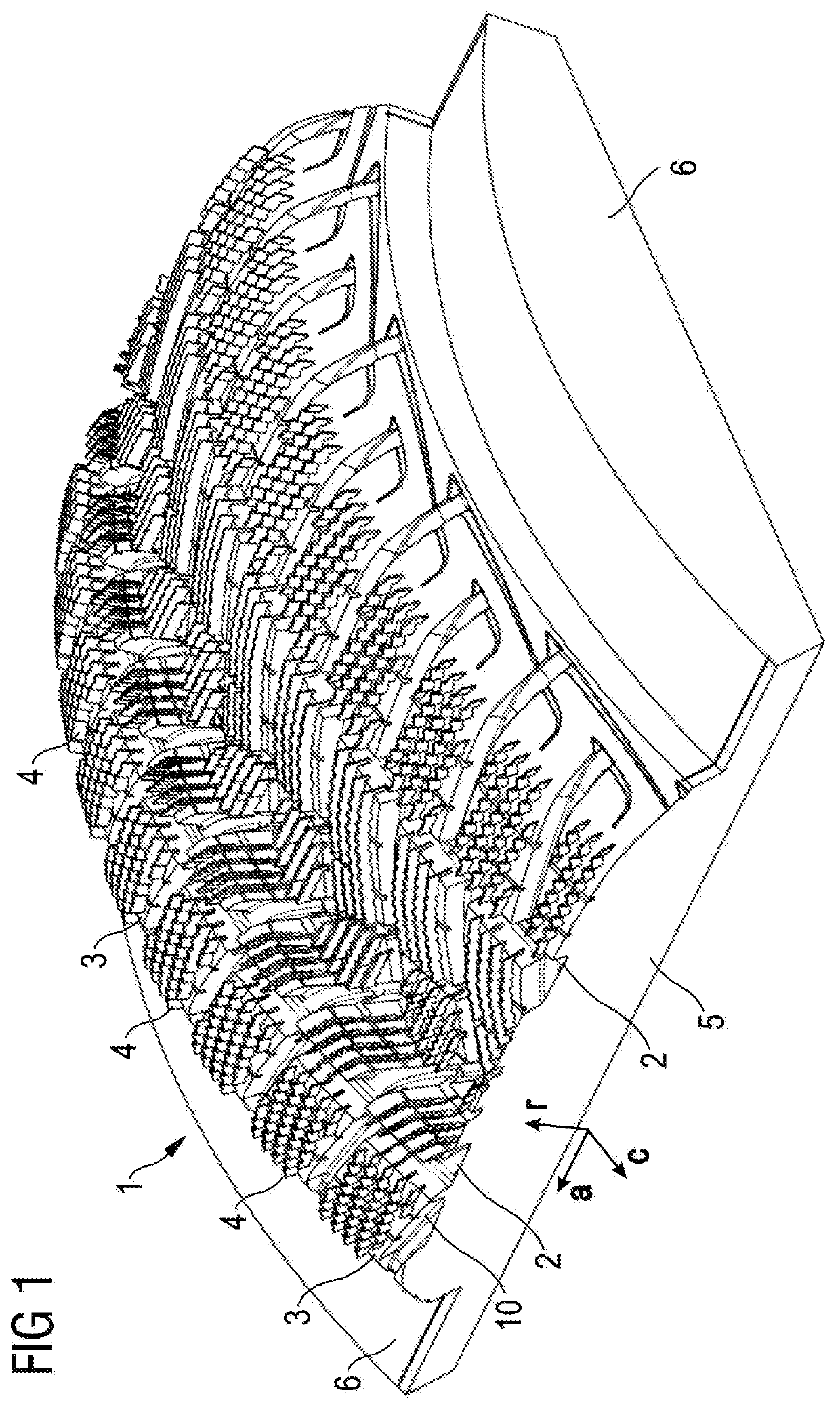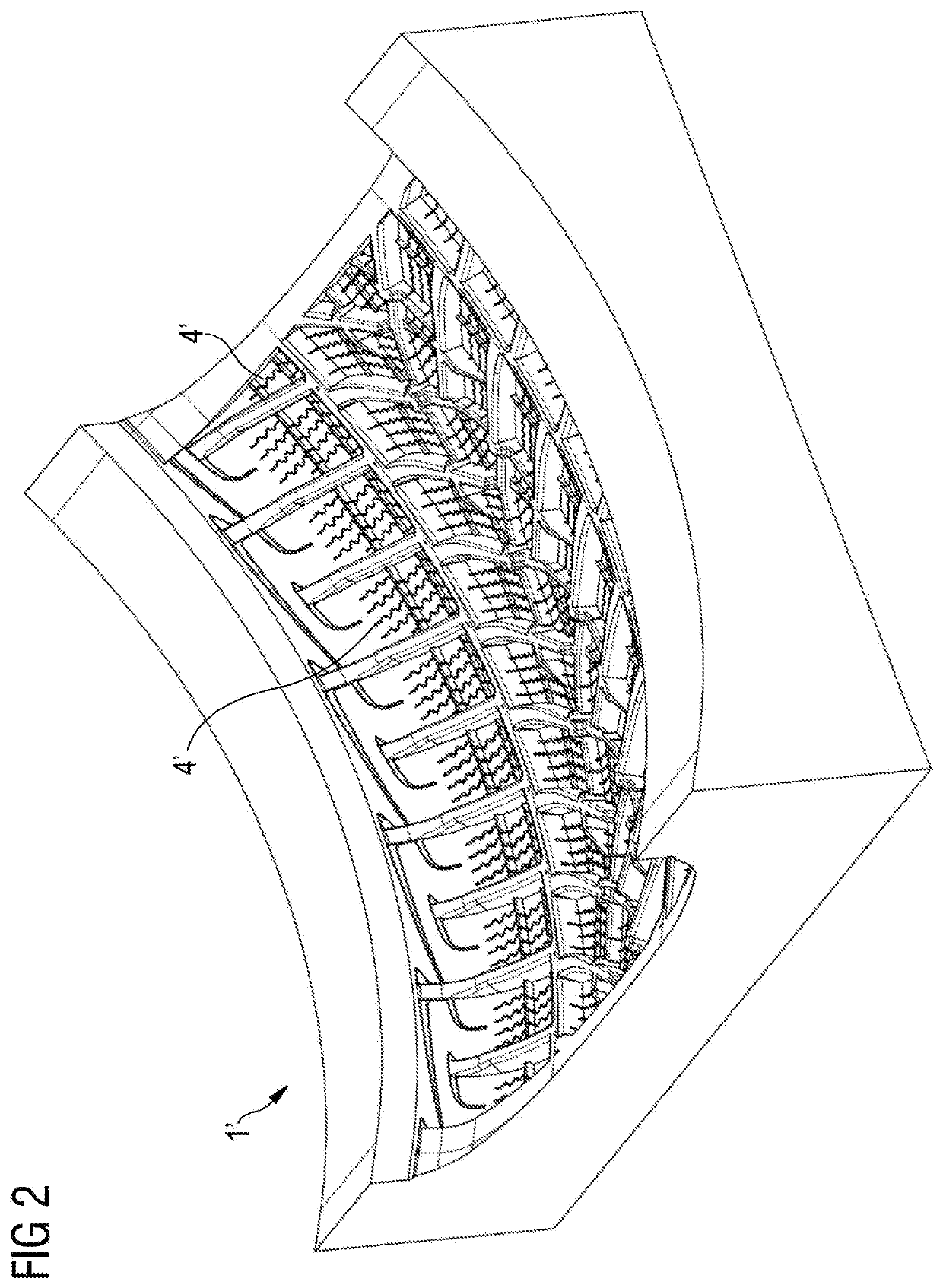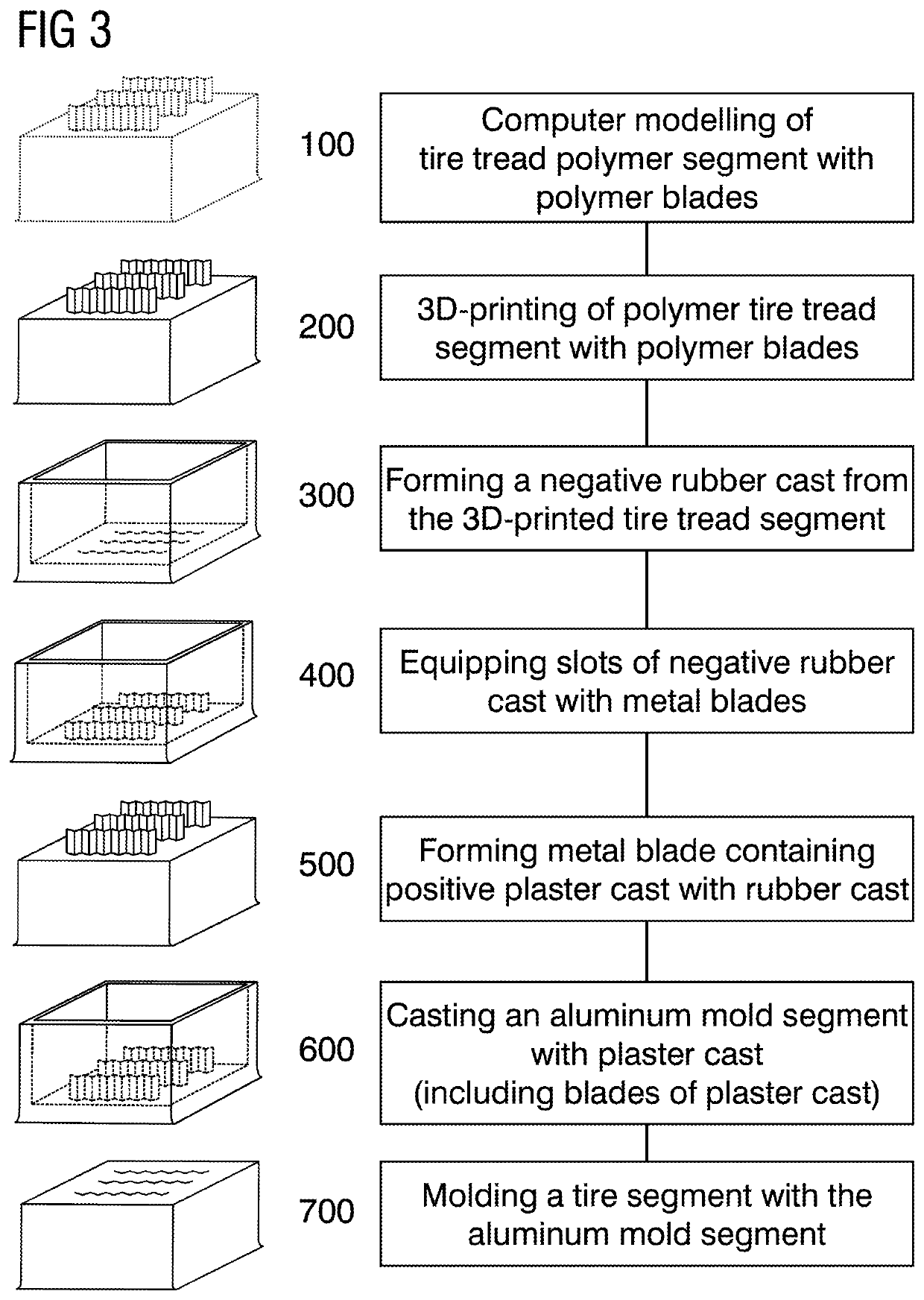Tire segment model and a method of making a tire mold segment
a tire segment and tire mold technology, applied in the field of 3dprinted tire segment models, can solve the problems of high cost, inability to meet in all cases accuracy and quality expectations, and large turnaround time of molds, and achieve the effects of improving mechanical stability, high stability, and easy handling of models
- Summary
- Abstract
- Description
- Claims
- Application Information
AI Technical Summary
Benefits of technology
Problems solved by technology
Method used
Image
Examples
Embodiment Construction
[0035]FIG. 1 shows a schematic perspective view of a tire segment model 1 in accordance with a preferred embodiment of the present invention. The tire segment model 1 comprises a tread portion 10 having a plurality of grooves 2 and a plurality of tread blocks 3. The tire segment model 1 further comprises blades 4 which extend from the radially outer surface of the tread blocks 3. The tread 10 may be arranged on a support portion 5 which may have also extensions 6 on both lateral side of the tread 10, which may facilitate handling of the tire segment model 1. The axial direction a, the circumferential direction c and the radial direction r are indicated, in the same sense as common for the description of tire symmetries. In accordance with this invention, the tire segment model 1 is made completely by 3D-printed.
[0036]FIG. 2 shows a negative cast 1′ made of rubber material and formed with the positive tire tread segment model 1 of FIG. 1. As visible in FIG. 2, the negative cast 1′ ha...
PUM
| Property | Measurement | Unit |
|---|---|---|
| height | aaaaa | aaaaa |
| height | aaaaa | aaaaa |
| melting point | aaaaa | aaaaa |
Abstract
Description
Claims
Application Information
 Login to View More
Login to View More - R&D
- Intellectual Property
- Life Sciences
- Materials
- Tech Scout
- Unparalleled Data Quality
- Higher Quality Content
- 60% Fewer Hallucinations
Browse by: Latest US Patents, China's latest patents, Technical Efficacy Thesaurus, Application Domain, Technology Topic, Popular Technical Reports.
© 2025 PatSnap. All rights reserved.Legal|Privacy policy|Modern Slavery Act Transparency Statement|Sitemap|About US| Contact US: help@patsnap.com



